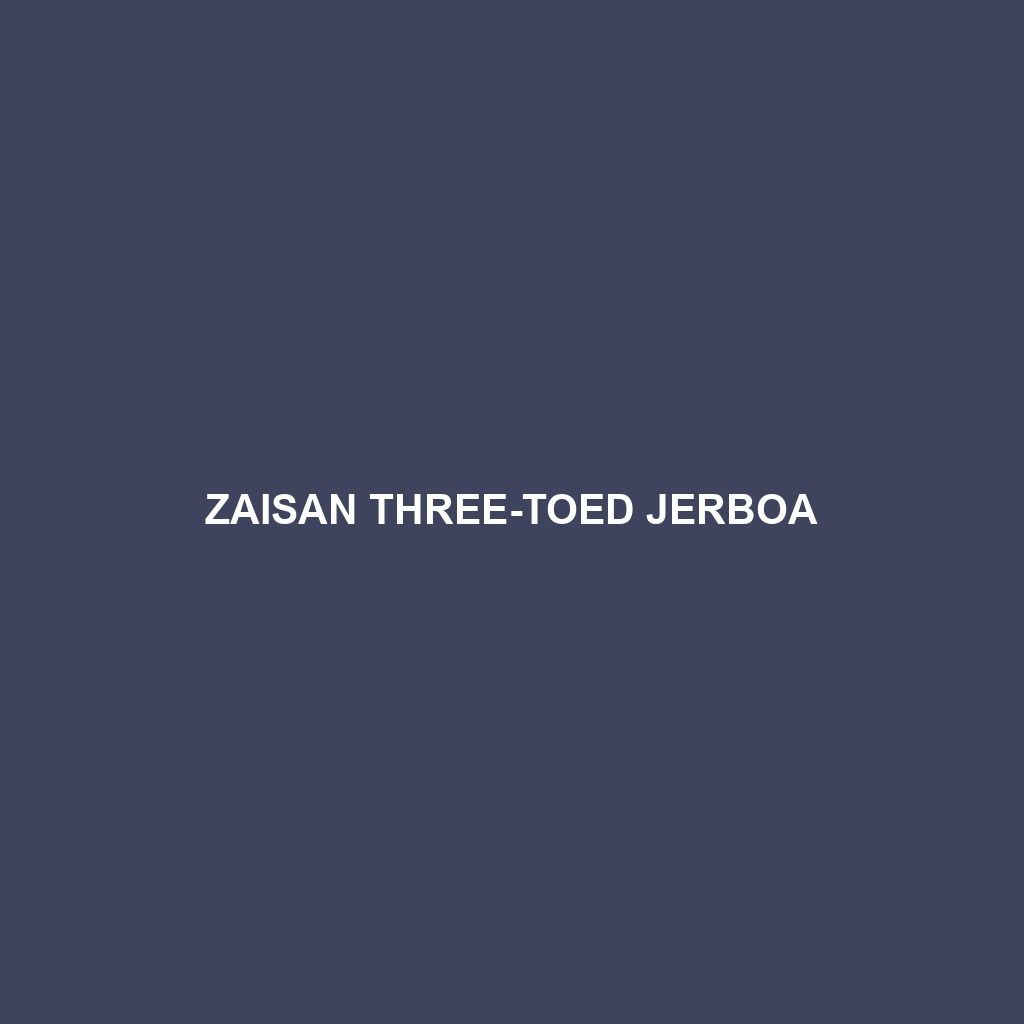Zaisan Three-toed Jerboa
Common Name: Zaisan Three-toed Jerboa
Scientific Name: Allactaga sibirica
Habitat
The Zaisan Three-toed Jerboa is primarily found in the arid regions of Central Asia, particularly in Mongolia and parts of China. This species thrives in steppe and semi-desert habitats, where sandy soils allow for extensive burrowing. Their preference for dry, open areas contributes to their adaptability and survival in harsh climates.
Physical Characteristics
Zaisan Three-toed Jerboas are small, nocturnal mammals with an average body length of about 10-12 cm (4-5 inches) and a tail that is often longer than their body. They have a distinct sandy or light brown fur that aids in camouflage against the desert landscape. Notable features include their elongated hind limbs, which allow for remarkable jumping abilities, and large ears that are adapted for hearing predators. Their three-toed feet are uniquely adapted for efficient movement in loose sand.
Behavior
These jerboas are primarily nocturnal, emerging at night to forage for food. They exhibit fascinating jumping behaviors that can cover distances of up to 3 meters (10 feet) in a single leap. Zaisan Three-toed Jerboas are adept diggers and create elaborate burrows that serve as protection from predators and extreme weather conditions. Their social interactions are minimal, with individuals mostly leading solitary lives.
Diet
The diet of the Zaisan Three-toed Jerboa consists mainly of seeds, grains, and vegetation, which they forage during their nocturnal activities. They have evolved to obtain moisture from their food, which allows them to survive in arid environments where water sources are limited. This adaptation makes them well-suited to thrive in the desert ecosystems they inhabit.
Reproduction
Breeding for the Zaisan Three-toed Jerboa typically occurs in the spring, with females capable of producing 2-3 offspring in a litter. The gestation period lasts about 24 days, and young are born fully furred and with their eyes open. Maternal care is extensive, as mothers nurture and protect their young until they are independent.
Conservation Status
The conservation status of the Zaisan Three-toed Jerboa is currently listed as *Data Deficient* by the IUCN. While specific population numbers remain unclear, habitat destruction and environmental changes pose potential threats to their population. Conservation efforts are crucial to safeguard their habitats from overgrazing and urbanization.
Interesting Facts
1. Zaisan Three-toed Jerboas are capable of sustaining high jumps that serve as both a means of locomotion and defense against predators.
2. Their unique adaptations help them survive in some of the most inhospitable environments on Earth, showcasing the resilience of desert wildlife.
Role in Ecosystem
The Zaisan Three-toed Jerboa plays an integral role in its ecosystem as a seed disperser, contributing to the propagation of various plant species. Additionally, they serve as prey for larger predators, maintaining the balance within their food web. Their burrowing activities also help aerate the soil, promoting healthy soil composition and plant growth in their habitats.
